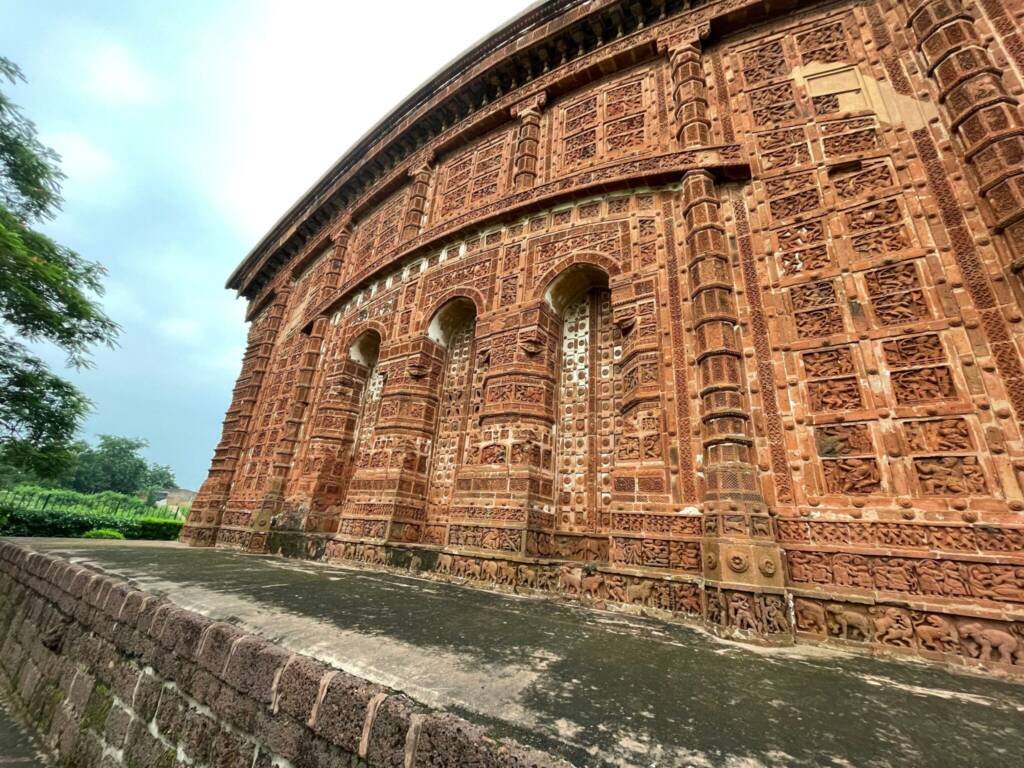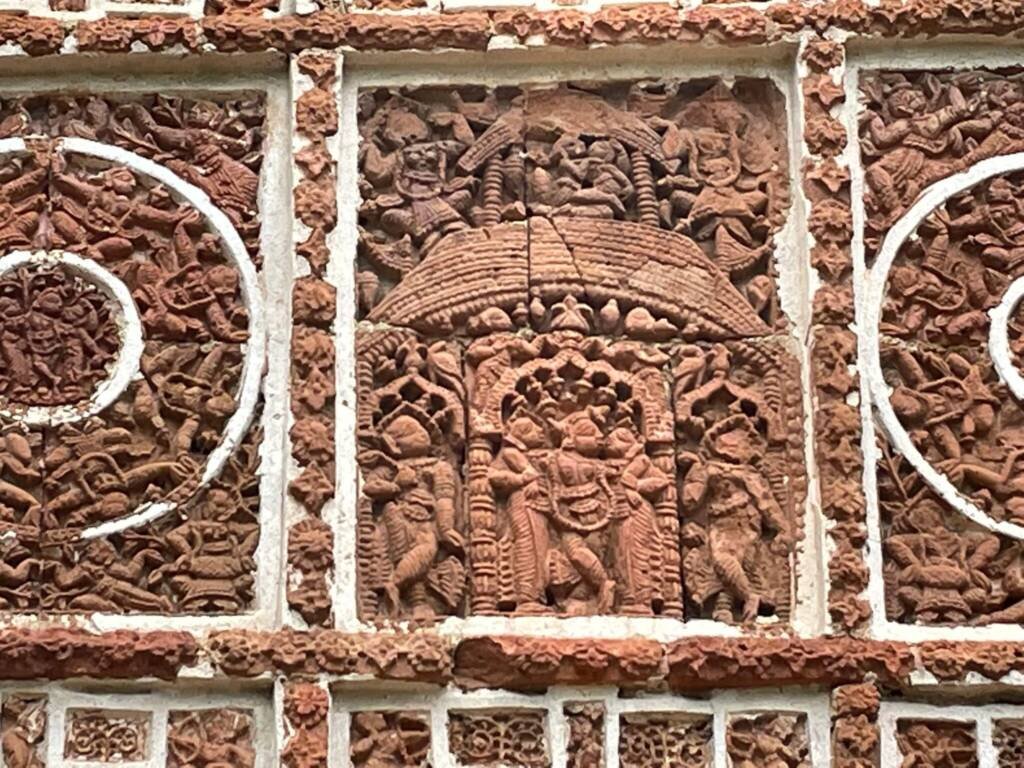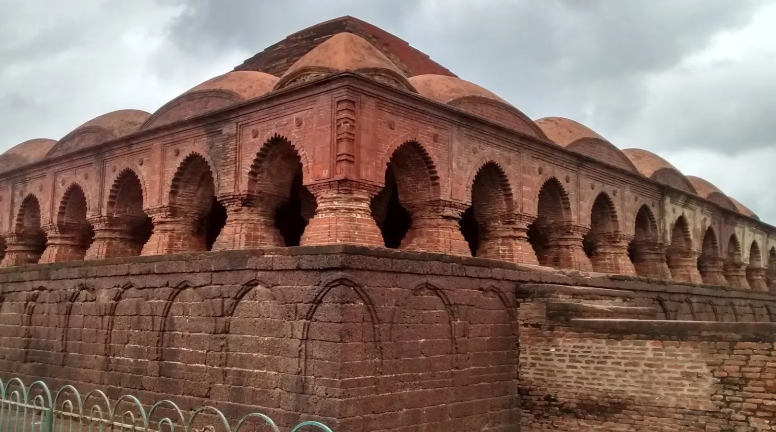In the quiet town of Bishnupur, West Bengal, lies a legacy sculpted not in stone or marble, but in something far more humble—earth. Here, in the heart of Bengal’s red soil, artisans once turned clay into divinity, and bricks into breathtaking art. The terracotta temples of Bishnupur stand today as glowing embers of a time when devotion, design, and storytelling converged in spectacular form.
Between the 17th and 18th centuries, under the enlightened patronage of the Malla kings, Bishnupur emerged as a cultural powerhouse. In a region lacking stone, local artisans turned to the abundant laterite clay, firing it into terracotta and chiseling it into mythological, musical, and martial marvels. What followed was nothing short of a renaissance in brick—a celebration of craftsmanship rooted deeply in the soil, soul, and spirit of Bengal.
These temples are not just monuments—they are living manuscripts etched in clay. Each façade is a narrative, a sacred scroll made of baked earth, recounting tales of Krishna’s playful mischief, Radha’s eternal longing, and the great epics—Ramayana and Mahabharata


Panels depict celestial dances, divine battles, village life, animals in motion—every inch pulsing with life and rhythm. In an era before printed books, these carvings served as visual scriptures, bringing sacred stories to every devotee, scholar, and traveler who stood before them.
What sets Bishnupur apart is not just the intricacy, but the intimacy of its temple designs. Inspired by vernacular Bengal architecture, the temples take forms like the chala (sloping roofs), ek-ratna (single spire), and pancha-ratna (five spires)—blending the simplicity of village huts with the symmetry of sacred geometry.
The Shyam Rai Temple, with its five ratnas and richly detailed terracotta panels, stands as a crown jewel of this tradition. Nearby, the Jor Bangla Temple, shaped like two traditional village huts joined together, offers a blend of simplicity and sophistication.

These temples weren’t just built—they were sculpted, brick by brick, ornamented with painstaking precision, yet built to endure Bengal’s monsoon rains and shifting soils.
At their core, these temples are a love letter to Lord Krishna—the divine lover, philosopher, and eternal muse of Bhakti tradition. They are less about grandeur, more about grace. Less about monumentality, more about emotional resonance.
Each temple feels like an offering—not just to a god, but to art itself. They remind us that when faith meets imagination, even the earth beneath our feet can become sacred.
Bishnupur’s terracotta temples are not relics. They are revelations. A reminder that even the simplest material, when shaped by skilled hands and guided by devotion, can create a legacy that outlives kingdoms.
To witness them is to see how Bengal once carved its soul into clay—and fired it into forever.



